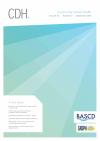Community Dental Health

- Cover Date:
- September 2018
- Print ISSN:
- 0265 539X
- Electronic ISSN:
- 2515-1746
- Vol:
- 35
- Issue:
- 3
Depressive symptoms and untreated coronal dental caries among adults ages 21-64 years, NHANES 2013-2014
Background: Depression has been linked to poor oral health among patients seeking dental care. However, systematic research on the relationship between depressive symptoms and oral health is limited. Objective: To examine the association of depressive symptoms with untreated dental caries among adults aged 21-64 years. Basic Research Design: Cross-sectional secondary analysis. Setting: The data were extracted national data collected in the United States (2013-2014 National Health Nutrition and Examination Survey). Participants: The sample consisted of 3,127 non-institutionalized civilians. Main outcome measure: Untreated coronal dental caries (yes, no) was the key outcome variable. Depressive symptom categories (none, moderate, and severe) were derived from the Patient Health Questionnaire-9 Depression Scale. Results: In the study sample, 33.4% of adults had untreated coronal dental caries. Most participants (77.9%) did not report depressive symptoms; 13.9% had mild and 8.2% had moderate or severe depressive symptoms. In unadjusted analyses, individuals with mild (Odds Ratio = 1.62 [95% CI: 1.26, 2.08] and moderate/severe depressive symptoms (Odds Ratio = 2.70 [95% CI: 1.81, 4.02]) were more likely to have untreated coronal caries as compared with individuals without depressive symptoms. When sex, race, age, education, family income-to-poverty ratio, dental visits, history of previous dental restorations, health insurance, and smoking were included into the model, the associations were no longer statistically significant (1.27 [95% CI: 0.96, 1.69] and 1.61 [95% CI: 0.95, 2.73],
respectively). Conclusion: The relationship between depressive symptoms and untreated coronal dental caries failed to remain significant after the addition of tobacco usage in the analysis.
Key words: Depressive symptoms, dental caries, NHANES, secondary analysis, United States
© BASCD 2018
doi:10.1922/CDH_4304Weiner07
- Article Price
- £15.00
- Institution Article Price
- £
- Page Start
- 179
- Page End
- 185
- Authors
- R. Constance Wiener, Chan Shen, Patricia A. Findley, Nilanjana Dwibedi, Usha Sambamoorthi
Articles from this issue
- Title
- Pg. Start
- Pg. End
- Dental Public Health In Action: Barriers to oral healthcare provision for older people in residential and nursing care homes: A mixed method evaluation and strategy development in County Durham, North East England
- 136
- 139
- Confirmatory factor analysis of the health literacy in dentistry scale (HeLD) in the Australian population
- 140
- 147
- Patients’ willingness to pay for dental services in a population with limited restorative services
- 167
- 172
- Oral health behaviours and oral health-related dietary behaviours: The interrelationship and determinants by latent class analysis
- 173
- 178
- Depressive symptoms and untreated coronal dental caries among adults ages 21-64 years, NHANES 2013-2014
- 179
- 185
